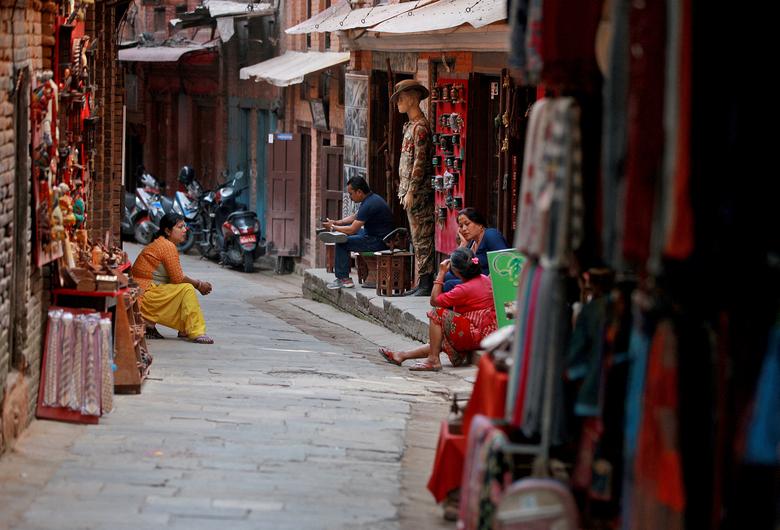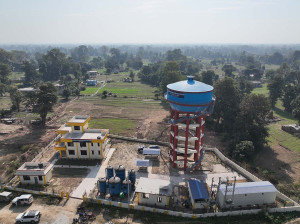Money
Monetary policy reins in credit expansion to control inflation
Most of the credit issued went into import financing which contributed to a ballooning balance of payments deficit and decrease in foreign exchange reserves, officials say.
Prithvi Man Shrestha
Covid-19 had forced the Nepal Rastra Bank to pursue a liberal monetary policy in the last two fiscal years with a view to expand credit to revive the pandemic-hit economy.
With the situation now changed with over expansion of credit causing a steep jump in imports leading to depletion of foreign currency reserves besides contributing to rising inflation, the central bank has come up with a plan to reduce the expansion of credit and money supply in the market.
Measures have also been announced to help banks and financial institutions to maintain more liquidity as excessive lending in the initial months of the last fiscal year resulted in a shortage of loanable funds to finance the productive sector in the later months.
Unveiling the monetary policy, central bank governor Maha Prasad Adhikari announced that credit expansion to the private sector would be confined within 12.6 percent, a sharp reduction from the targeted 19 percent in the last fiscal year.
Likewise, the new monetary policy aims to limit the growth of money supply (cash, demand deposits, non-cash assets that are very liquid and that are easily convertible into cash) to 12 percent from the last fiscal year’s target of 18 percent.
This is the first time that the growth target of credit expansion and money supply has been kept at such a low level in many years.
The greater the money supply and credit expansion, the greater the possibility of increased inflation because of the demand they create in the market. During the first 11 months of the last fiscal year, credit expansion to the private sector stood at 16 percent as banks and financial institutions stopped further lending in the second half of the last fiscal year.
In the early months, credit growth to the private sector had crossed 30 percent.
Central bank officials have time and again admitted that most of the credit issued went into import financing which contributed to a ballooning balance of payments deficit and decrease in foreign exchange reserves.
Merchandise imports soared 27.5 percent to Rs1,763 billion, as against Rs186 billion in exports during the period. As a result, gross forex reserves plunged by 19.6 percent to $9.45 billion in mid-June 2022, down from $11.75 billion in mid-July 2021.
Massive imports coinciding with a surge in global inflation caused by rising prices of petroleum products contributed to a 70-month high inflation of 8.56 percent and depleting foreign exchange reserves.
Though the monetary policy aims to tame inflation at 7 percent as announced by the budget statement for the current fiscal year, the central bank believes maintaining inflation within that limit will be very challenging.
“The impact of rising fuel prices and supply side constraints on prices will continue to remain for some time,” the monetary policy states. “As domestic demand (for goods and services) will increase due to the upcoming general elections, salary increment (of government staff) through the budget and the expansion of the social security net, it will be challenging to maintain inflation within the limit.”

Experts say the monetary policy has acknowledged that rising inflation and massive imports have emerged as major concerns for the economic health of the country. “The question is whether the policy adopted will be adequate to control inflation and imports,” said Chiranjeevi Nepal, a former governor of the central bank.
Nepal said the central bank should have ended some of the credit schemes including the refinance, which contributed to a rise in imports and brought inflation from abroad along with the imported goods. Under this scheme, enterprises affected by Covid-19 would receive refinance at the rate of either 3 or 5 percent.
During the first 11 months of the last fiscal year 2021-22 ended July 16, a total of 24,305 borrowers received Rs115.70 billion. In the previous fiscal 2020-21, a total of 48,890 borrowers received Rs148.75 billion.
Governor Adhikari said the central government would review the policy on refinance, confining this scheme to the productive sector including agriculture, exports and sectors which are yet to recover from the Covid-19 pandemic.
“Questions have been raised whether the refinance scheme has been received by firms which were in urgent need of such a measure,” said Narayan Poudel, former executive director of the central bank.
“Such refinance should be provided as emergency aid only. If the central bank provides this option continuously, it will lead to credit expansion and affect economic stability.”
Considering the impact of Covid-19, Nepal Rastra Bank had allowed banks and financial institutions to restructure and reschedule loans. It said that it would review this provision. The central bank also came up with certain moves to improve the liquidity position of banks and financial institutions.
After Covid-19 hit the country, the central bank had adopted a policy of allowing banks and financial institutions to maintain the liquidity level at the lowest possible so that they would be able to expand credit to help the economy recover.
Consequently, the cash reserve ratio (CRR), a certain percentage of a bank's total deposits that it needs to maintain as liquid cash at Nepal Rastra Bank, and the statutory liquidity ratio (SLR), which is the minimum percentage of deposits that a commercial bank needs to maintain in the form of liquid cash, gold or other securities, were slashed.
As the new monetary policy seeks to reduce expansion of credit, it announced that the CRR and the SLR would also be raised.
The CRR will be ramped up to 4 percent from 3 percent starting from August 17 while the SLR will be raised to 12 percent for commercial banks from 10 percent by mid-January next year. In the case of development banks and finance companies, it will be hiked to 10 percent from the current 8 and 7 percent respectively.
Former governor Nepal said that both the CRR and the SLR should have been hiked further considering the current situation of liquidity crunch in the banking system and credit expansion.
Poudel says the new monetary policy has essentially aimed to address the issue of external sector risks such as a widening balance of payments deficit, depleting foreign exchange reserves and rising imports.
“To this end, it has sought to control credit expansion and money supply,” he said. “They are necessary measures too in the current context, but it may not help achieve the projected economic growth of 8 percent.”




 15.12°C Kathmandu
15.12°C Kathmandu















